London Neighbourhoods
Soho

Soho is a village within a city; it is home to London's gay community (Old Compton Street) and many of the city's central sites like Chinatown, Piccadilly Circus, Shaftesbury Avenue and part of Oxford Street. This is the heart of the city and it is packed with restaurants, bars, jazz and music venues and creative agencies. Soho Square is a popular gathering point on the weekends and the theatre district.
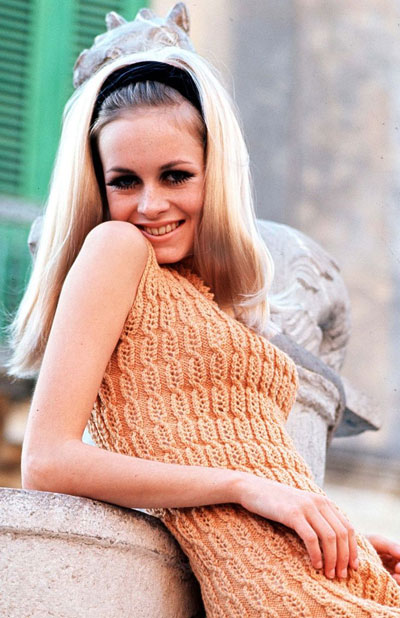
Long established as an entertainment district, for much of the 20th century Soho had a reputation as a base for the sex industry in addition to its night life and its location for the headquarters of leading film companies. Since the 1980s, the area has undergone considerable gentrification. It is now predominantly a fashionable district of upmarket restaurants and media offices, with only a small remnant of sex industry venues. Diverse, fun-loving and never quiet, Soho in central London is today a great place to find live entertainment, interesting food and pulsing nightlife. Soho attracts a wide mix of people. Its history, venues and atmosphere make it a must-see for tourists, and Londoners flock here too. Browse the boutique shops, relax in Soho Square, or treat yourself to a West End show, a meal and a delicious cocktail.
Soho is still known for its risque vibe. This is where you'll find many of London's sex shops, burlesque shows and gay and lesbian bars.Other interesting London areas within walking distance of Soho include Chinatown, Covent Garden, Piccadilly Circus and Mayfair.

1960s Soho
Soho is situated in the heart of London's West End. The area covers roughly one square mile (2.6 square kilometres), so it's easy to explore on foot. Soho is bordered by Oxford Street, Regent Street, Leicester Square and Charing Cross Road. Travelling to Soho is easy. Catch a London bus, or get the London tube. London tube stations near Soho include Piccadilly Circus, Oxford Circus, Tottenham Court Road and Leicester Square. On many weekends, Soho is busy enough to warrant closing off some of the streets to vehicles.
Soho is near the heart of London's theatre area. It is home to Soho Theatre, built in 2000 to present new plays and comedy. Gerrard Street is the centre of London's Chinatown, a mix of import companies and restaurants (including until 2015 when it closed - Lee Ho Fook's, mentioned in Warren Zevon's song "Werewolves of London"). Pinball Wizard, one of the most famous songs by The Who and subsequently covered by Elton John, contains the line "From Soho down to Brighton, I must've played them all", in reference to the locations frequented by the title character. Street festivals are held throughout the year, most notably on the Chinese New Year.

Online Walks

Things to See and Do
The music scene in Soho can be traced back to 1948 and Club Eleven, generally regarded as the first venue where modern jazz, or bebop, was performed in the UK. The Harmony Inn was a hang-out for musicians on Archer Street operating during the 1940s and 1950s. It stayed open very late and attracted jazz fans from the nearby Cy Laurie Jazz Club.
The Ken Colyer Band's 51 Club, a venue for traditional jazz, opened on Great Newport Street in the early fifties. Blues guitarist and harmonica player Cyril Davies and guitarist Bob Watson launched the London Skiffle Centre, London's first skiffle club, on the first floor of the Roundhouse pub on Wardour Street in 1952.
In the early 1950s, Soho became the centre of the beatnik culture in London. Coffee bars such as Le Macabre on Wardour Street, which had coffin-shaped tables, fostered beat poetry, jive dance and political debate. The Goings On, located in Archer Street, was a Sunday afternoon club, organised by beat poets Pete Brown, Johnny Byrne and Spike Hawkins, that opened in January 1966. For the rest of the week, it operated as an illegal gambling den. Other "beat" coffee bars in Soho included the French, Le Grande, Stockpot, Melbray, Universal, La Roca, Freight Train (Skiffle star Chas McDevitt's place), El Toro, Picasso, Las Vegas, and the Moka Bar.
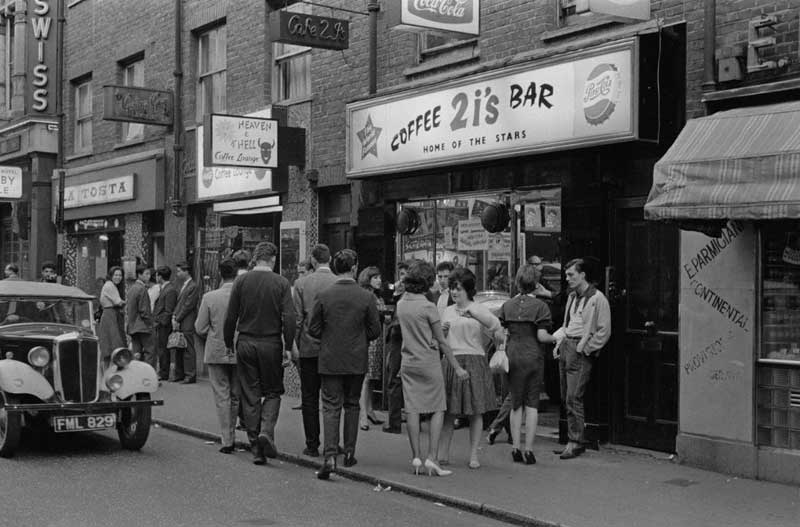
The 2i's Coffee Bar was probably the first rock club in Europe, opened in 1956 (59 Old Compton Street), and soon Soho was the centre of the fledgling rock scene in London. Clubs included the Flamingo Club, La Discotheque, Whisky a Go Go, Ronan O'Rahilly's The Scene in 1963 (near the Windmill Theatre in Ham Yard - formally The Piccadilly Club) and jazz clubs like Ronnie Scott's, which opened in 1959 at 39 Gerrard Street and moved to 47 Frith Street in 1965.
Soho's Wardour Street was the home of the Marquee Club, which opened in 1958 and where the Rolling Stones first performed in July 1962. Eric Clapton and Brian Jones both lived for a time in Soho, sharing a flat with future rock publicist, Tony Brainsby.
Soho was also home to Trident Studios at 17 St Anne's Court between 1968 and 1981 where recording artists included The Beatles, The Who, Elton John, Queen and David Bowie. Gerrard Street in Soho is the location where a nascent Led Zeppelin first rehearsed/performed together in a secluded basement room upon their formation in 1968.

Carnaby Street
Soho's Carnaby Street has an iconic heritage. From being the birthplace of Swinging London in the 1960's, the home of Mods, Skinheads, Punks and New Romantics to the street style tribes of today. Carnaby has and always will be the epicentre of culture and lifestyle in London's West End.
Carnaby Street itself was laid out in 1682 by bricklayer Richard Tyler, who took its name from Karnaby House, the first house built on the street. The street's reputation as a centre of fashion began when John Stephen, previously a shop assistant at Vince, opened 'His Clothes' on Beak Street in 1953, and later at 5 Carnaby Street. Although his merchandise targeted teenagers, it attracted high profile pop stars including Jimi Hendrix, the Beatles, the Rolling Stones and the Kinks.
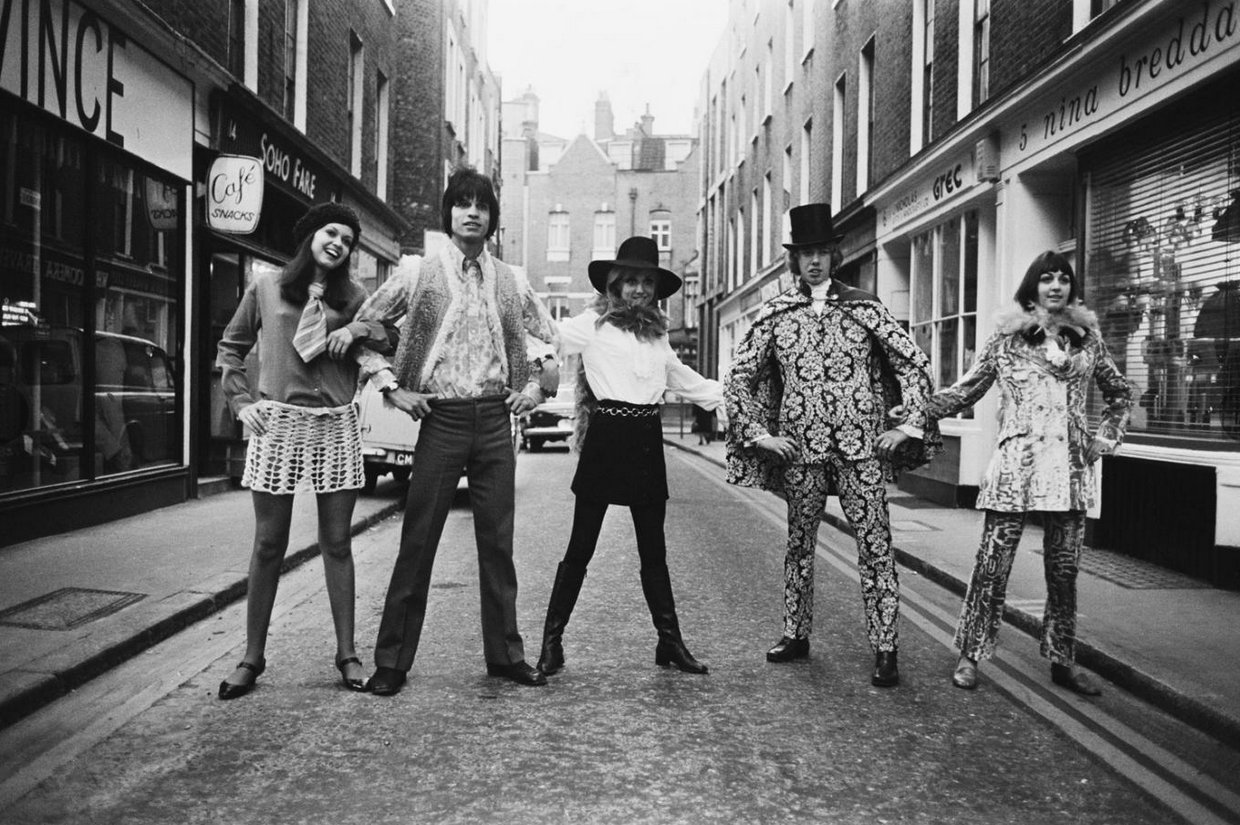
For years Carnaby was the place to be if you were a creative in search of inspiration. Carnaby earned its credentials during the 1960s with vibrant clashes of colour, new cultures, exciting new music and a rebellious identity, there was nowhere else like it in London. Music stars including Jimi Hendrix, The Beatles, The Rolling Stones, The Kinks and style icons Brigitte Bardot and Elizabeth Taylor were all Carnaby Street regulars.
Mod fashion became extremely popular among females and Mary Quant encouraged not only this style, but also young people to play with fashion. Post-war generation were the first to have money to buy records, new clothes and makeup. That was ideal because there were dozens of new styles being invented every day, especially in Carnaby Street in London. Mary Quant invented mini-skirt and this is where all begins in the 1960s fashion. Dresses were becoming shorter and shorter every day until they were covering the legs only ten centimeters. Pop art brought geometric patterns and two-coloured (mostly black-white) dresses. Mini-dresses were often worn with long tight boots. Stripes, dots and other geometrical patterns were everywhere; they decorated the skirts, dresses, blouses ... PVC raincoats and bobbed hair were IT for women. Twiggy was known as "the queen of Mod" and she was "the face of 1966".
To promote the opening of new boutique 'Tom Cat' in 1966, owner Irvine Sellar asked Tom Jones to walk down Carnaby Street with 'Casino Royale' actress Christine Spooner and a cheetah. Henry Moss opened womenswear boutique Lady Jane at 29 Carnaby Street with girls changing in the shop windows, which resulted in Mr Moss being arrested for obstructing the highway due to the crowds it drew. Paul McCartney met Linda on 15 May at Bag O' Nails Club, 9 Kingly Street.

Punk emerged taking Carnaby by storm with The Sex Pistols pictured on the street in 1976, now one of music's most iconic photographs of the time, photographed by Ray Stevenson. Carnaby was the place to showcase defiant style. Whether you were a Mod, Punk, Rocker or a Goth, Carnaby was your fashion home.

The early 1960s Northern Irish band Margo and the Marvettes arrive in Denmark Street for a recording session
Denmark Street
Denmark Street, on the edge of London's West
End, runs from Charing Cross Road to St Giles. It is near St Giles in
the Fields Church and Tottenham Court Road station. Named after Prince George of Denmark, this ancient thoroughfare originally led from Charing Cross Rd up to the gates of the leper hospital, that stood upon the site now filled by Renzo Piano’s gaudy citrus-toned corporate plaza, beyond which lay the notorious rookeries of St Giles. Although technically not part of Soho, Covent Garden's Denmark Street is known for its connections with British popular music, and is nicknamed Britain's Tin Pan Alley after a 1960s night club there, and because of a large concentration of shops selling musical instruments. Guitars have been manufactured in this street since the time of Queen Anne and there is still no better place in London to go and buy one.
Around half of the houses constructed in the sixteen-eighties still stand, anchoring the street in London’s past even as it became celebrated as a favoured destination for pop musicians in the modern era. Almost everyone you care to name – from The Beatles, Stevie Wonder, Elton John, Jimi Hendrix, Simon & Garfunkel, Bob Marley, Lou Reed, The Clash and David Bowie – frequented Denmark St, recording music, composing songs, collaborating, acquiring instruments and partying.
The Sex Pistols lived beneath number 6 Denmark Street, and recorded their first demos in a backyard shed. Jimi Hendrix, the Rolling Stones and David Bowie have all recorded there and Elton John's hit "Your Song" was written in the street.
Denmark Street first became associated with British popular music in the 1950s, first via publishers and later by recording studios and music shops. This market declined in the 1970s to be replaced by music shops
and independent recording studios. The New Musical Express was founded
at No. 5 in 1952 and remained there until 1964. Paul Simon was
based in London in the mid 1960s - Mills Music at number 20, turned him away, telling the young singer/songwriter
that his compositions "Homeward Bound" and "The Sound of Silence" were
uncommercial.
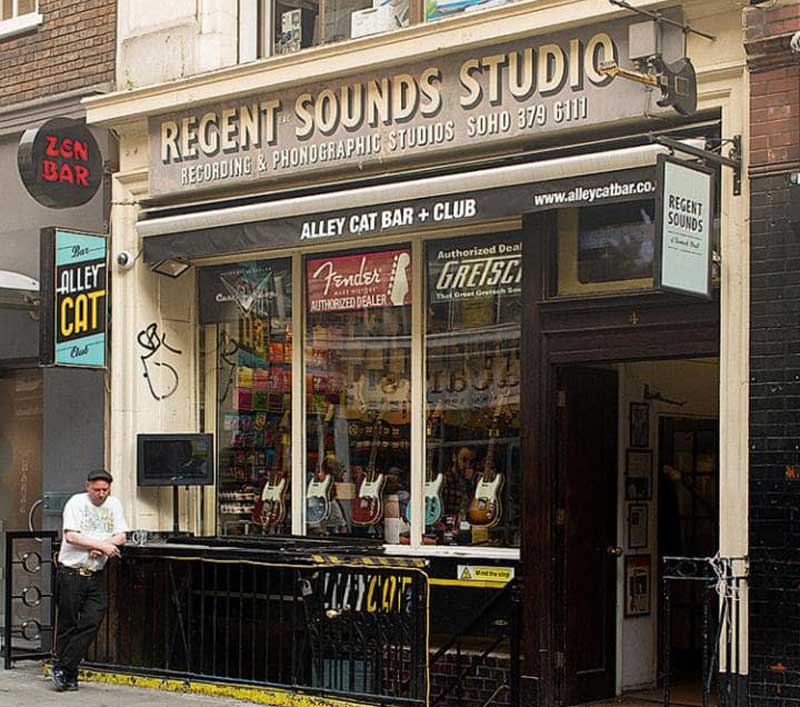
Numerous recording studios operated in Denmark Street. Regent Sound
Studio at No. 4 was founded in July 1961 to serve as a unit for
publishers to record their songs. The studio was based above the
offices of Essex Music and was frequently used by then Rolling Stones manager
Andrew Loog Oldham. The band recorded their first album at Regent in
1964 and the single "Not Fade Away" became their first major hit to be
recorded there. Oldham liked the atmosphere in the studio as he could
"stretch out a bit, experiment and learn from our mistakes", he once recalled. Publishers
Box & Cox had their offices at number 7. Their greatest hit was
"I've Got a Lovely Bunch of Coconuts". Southern Music, at No. 8, also
had a studio in the ground floor, which was used to record Donovan's
early hits, like "Catch The Wind", "Josie", "Colouyrs" and "Universal Soldier" in 1965.

The Rolling Stones outside the Tin Pan Alley Club, 1963
Many leading London session players including Big Jim Sullivan, Jack Bruce, Danny Thompson, and future Led Zeppelin members John Paul Jones and Jimmy Page regularly
played in Denmark Street studios. In 1964, The Kinks, with Page on
guitar and Jon Lord (later to form Deep Purple) on piano, recorded "You
Really Got Me" in one of the basement studios. Musicians often
socialised around the Gioconda Cafe at No. 9. David Bowie recruited his
first backing band, The Lower Third, in the bar, while the Small Faces
formed after the original members socialised around the Gioconda. Other
regular patrons included David Bowie and Jimi Hendrix.

It was on the roof of 20 Denmark Street (above: red roof to the right of centre) in 1970 that Bernie Taupin sat and wrote Elton John's first hit, "Your Song", referencing the experience - and the location - in the song's lyrics: "I sat on the roof and kicked off the moss". It was written as he waited for Elton to turn up on the morning of 27th October 1969.
In 1965 the 17 year old Reggie Dwight (Elton's birth name) got his first job in the music business as an office boy (in the post room) parcelling up sheet music and
making tea at Mills Music at 20 Denmark Street. His wage was £4.50 a week. He has no recollection of serving Paul Simon with tea and biscuits in his first year there, but undoubtedly he did. John and Taupin would commemorate this period in their on the semi-autobiographical concept album, Captain Fantastic and the Brown Dirt Cowboy album with
the lines, "Two teas both with sugar please, in the back of an alley" in the title song. The songs recall the struggles John (Captain Fantastic) and Taupin (the Brown Dirt Cowboy) had in the early years of their musical careers (from 1967 to 1969) in Denmark Street, leading up to John's eventual breakthrough in 1970.
In the song 1974 "Bitter Fingers", they refer to themselves as the Tin Pan Alley Twins and recall how John - "the keyboard player with hollow haunted eyes" - was laughed at by the musicians he served tea to who had already made the big time, for dreaming of pop stardom. According to John, "Captain Fantastic was written from start to finish in running order, as a kind of story about coming to terms with failure—or trying desperately not to be one. We lived that story."
"Someone Saved My Life Tonight", the only single released from the album, is a semi-autobiographical story about John's disastrous engagement to Linda Woodrow, and his related 1968 suicide attempt. The "Someone" refers to Long John Baldry, who convinced him to break off the engagement rather than ruin his music career for an unhappy marriage.
It was around the same time that Lucien Salama, a costing clerk whose
hobby was making home movies around the streets of London, happened to be
filming on Denmark Street. Many years later Lucien's son Joe was
transferring his father's collection of cine film to DVD when he
noticed something striking: an unmistakeable figure - tall, slim
and elegantly dressed in a light grey Carnaby Street suit - walks
into the frame. Noticing that he is being filmed, he smiles at the
camera, as he will smile at a million cameras in the future – as
if it is his destiny to be recognised and captured for immortality.
Eighteen-year-old David Jones, or David Bowie, as he would later
become, was a regular visitor to Denmark Street.
A few months earlier, at Central Sound Studios, in the basement of
No. 9 Denmark Street, Jones had made one of his first recordings with his
group the Manish Boys, a cover version of 'Hello Stranger' (which was
never released), and he was regularly to be found next door in the
Giaconda, trading dreams and tales of woe with a Small Face or a Kink
or two. The songwriter Geoff Stephens ('Semi-Detached Suburban Mr
James', 'Sorry Suzanne', 'Winchester Cathedral'), worked at Southern
Music at No. 8 Denmark Street. Like many of his contemporaries, at
around midday Stephens would make the short, brisk stroll to the Royal
George pub on Charing Cross Road, where a group of songwriters and
producers would spend the next three hours drinking and playing darts.
"I think you'd call it networking today," he says.
Among those who frequented the Royal George pub was Mickie Most, who would produce hits by the Animals,
Herman's Hermits, Suzi Quatro and many others, and a man named
Mike Smith, who worked at Decca Records. It was Smith who had
supervised the abortive recording of David Jones and the Manish Boys,
failing to see the star that Jones would become as David Bowie. But he
was haunted by an even greater loss. Mike's boss was Dick Rowe,"
Stephens remembers. Mike had two acts he wanted to sign up. One was Brian Poole and the Tremeloes, and the other was The Beatles. Dick Rowe
said to him, "you can only sign one of them". So he signed Brian Poole
and the Tremeloes on the strength of the fact that they lived near him
in Barking in Essex.

The house where the Sex Pistols once lived and recorded music - and which bears graffiti by Johnny Rotten - has been issued a Grade II listing.
Some rickety stairs in a courtyard at the back of No. 6 Denmark Street
led up to an attic office space. In the early 1970s this was occupied
by the group Badfinger, who wrote "Without You" there, which was a hit
for Harry Nilsson. In 1976 a boutique-owner named Malcolm McLaren
rented the rooms, where a group he had put together called the Sex
Pistols rehearsed while rats scurried across the floor. Two of them,
Steve Jones and Paul Cook, slept there.
When the Sex Pistols moved out,
they left behind walls scrawled with graffiti, still intact and with
something of the exotic mystery, if not the artistic refinement, of
Paleolithic cave paintings. There are crude drawings of "Fatty Jones"
Sid Vicious and his ill-fated inamorata "Nanny Spunger"; a caricature
of McLaren clutching pound notes, captioned "Muggerage", and a cry of
angst: "Depressedd Miserable Tired Ill Sick Booed and Bored". Jones
would later admit that the premises were particularly convenient for
stealing from a shop downstairs under cover of darkness, smashing the
window of a neighbouring guitar shop and helping himself. Happy days!
revolutionary author and politician Carl
Marx (1818-1883) lived here, 1851-56. Karl Marx settled in London in
1849 and remained in the city until his death in 1883. He is
commemorated with a blue plaque at 28 Dean Street in Soho, where he
worked on the first volume of Das Kapital.
Frith Street
20 Frith Street, Soho:When composer Leopold Mozart had recovered for a minor illness, the Mozart family moved back to central
London in September 1764, when they took lodgings at 20 Frith Street in
Soho. While there, his eight-year-old son, Wolfgang Amadeus Mozart, met
the youngest son of Johann Sebastian Bach, Johann Christian, who had an
important influence on Mozart’s musical style. But it appears
London had few redeeming features for Mozart’s father apart from
its musical society. The Mozarts left their Soho residence in July 1765
and continued on their European tour. Mozart later returned to his home
town of Salzburg before eventually settling in Vienna, where he died
aged 35.
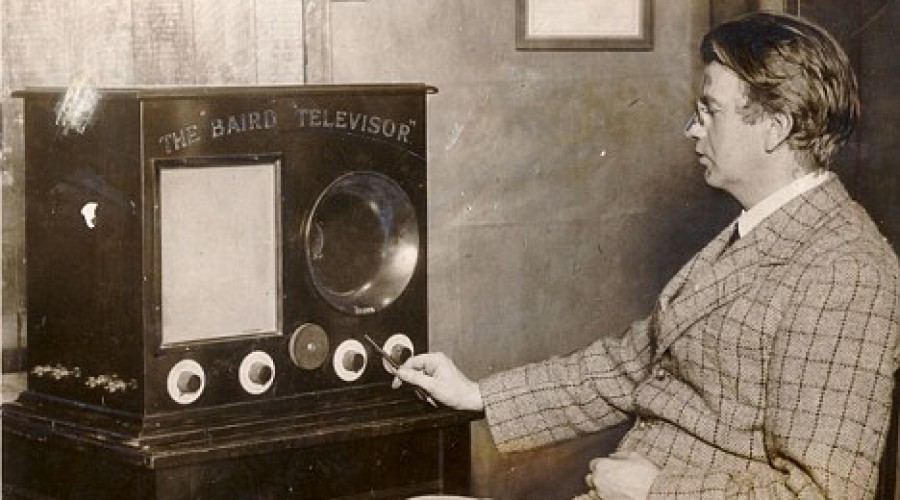
John Logie Baird
in 1926 in this house, John Logie Baird (1888-1946) first demonstrated television.
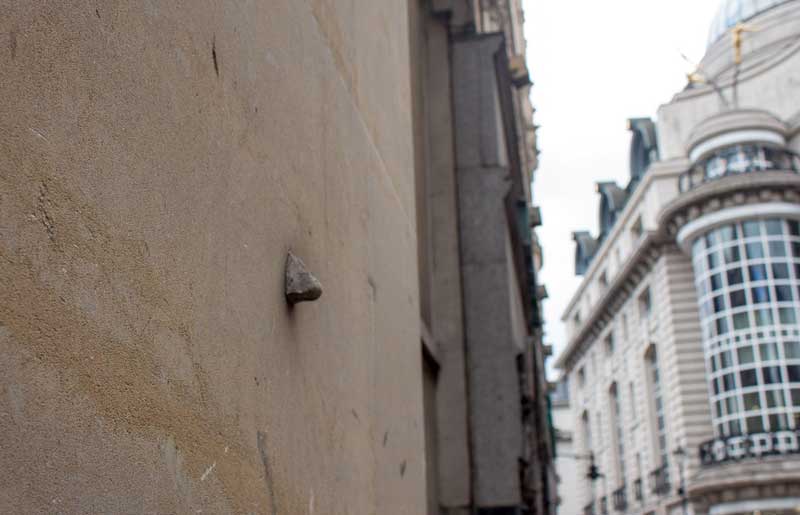
The Seven Noses of Soho
When CCTV started to expand in the city of London, artist Rick Buckley had something to say amidst similar voices that cried 'Big Brother' was watching. With the inspiration of many other acts of art in protest in his arsenal, he came up with the unique conclusion to set about placing casts of his own nose around the capital, quite often under the very nose of the cameras themselves.
He succeeded in plastering 35 of them across the city, many of which have since been removed, except seven of them that remain to the current day. It has since been stated that discovering each and every one of these lasting legacies will lead you to great wealth.
Design by W3layouts

